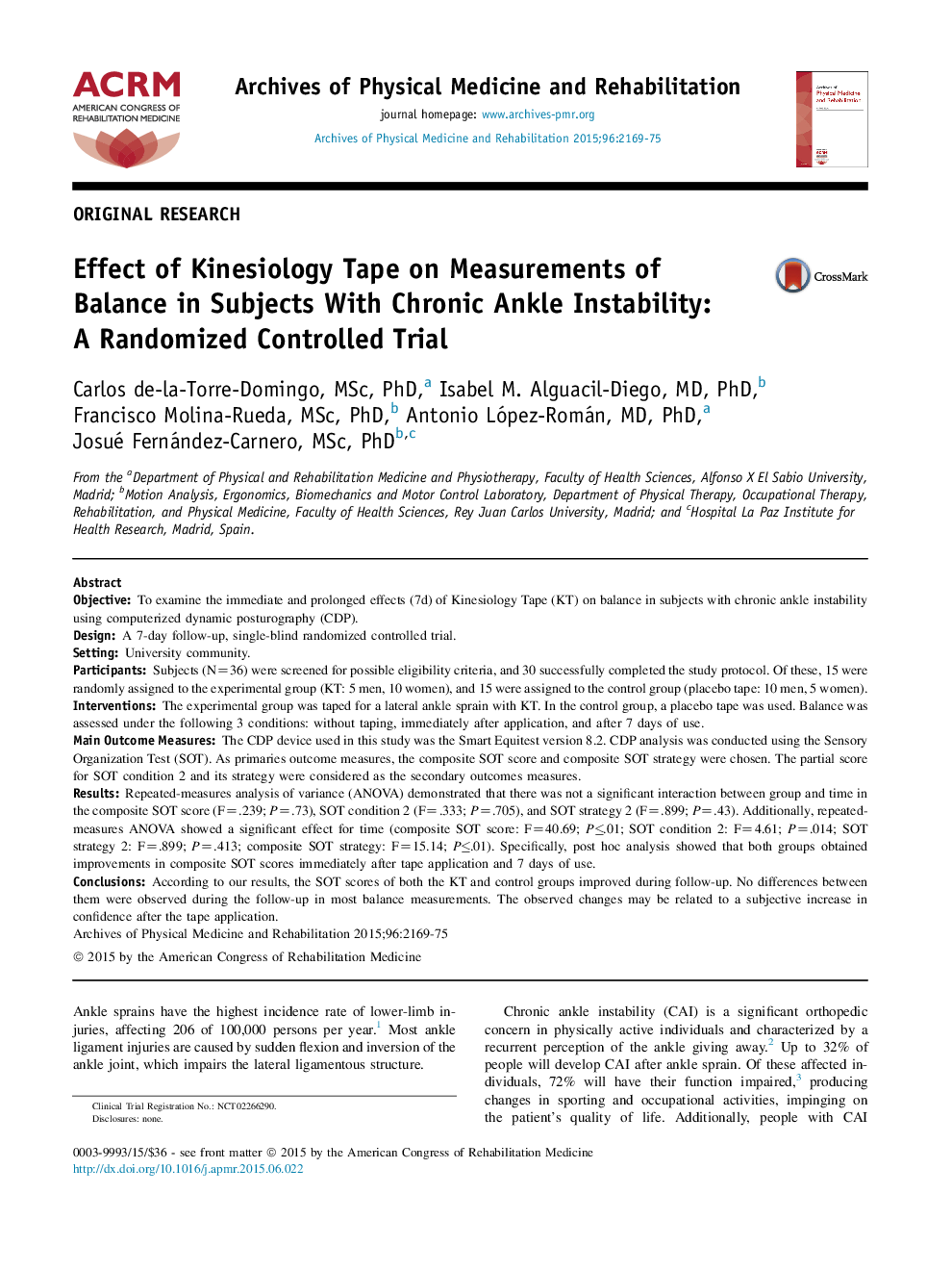| کد مقاله | کد نشریه | سال انتشار | مقاله انگلیسی | نسخه تمام متن |
|---|---|---|---|---|
| 3448200 | 1595674 | 2015 | 7 صفحه PDF | دانلود رایگان |

• We studied the immediate and prolonged effects (over 7d) of Kinesiology Tape in chronic unstable ankles.
• Posturography analysis was conducted using the Somatosensory Organization Test (criterion standard).
• Both groups (Kinesiology Tape and placebo) showed improvements through the follow-up.
• There were no differences between placebo tape and Kinesiology Tape groups during the follow-up.
ObjectiveTo examine the immediate and prolonged effects (7d) of Kinesiology Tape (KT) on balance in subjects with chronic ankle instability using computerized dynamic posturography (CDP).DesignA 7-day follow-up, single-blind randomized controlled trial.SettingUniversity community.ParticipantsSubjects (N=36) were screened for possible eligibility criteria, and 30 successfully completed the study protocol. Of these, 15 were randomly assigned to the experimental group (KT: 5 men, 10 women), and 15 were assigned to the control group (placebo tape: 10 men, 5 women).InterventionsThe experimental group was taped for a lateral ankle sprain with KT. In the control group, a placebo tape was used. Balance was assessed under the following 3 conditions: without taping, immediately after application, and after 7 days of use.Main Outcome MeasuresThe CDP device used in this study was the Smart Equitest version 8.2. CDP analysis was conducted using the Sensory Organization Test (SOT). As primaries outcome measures, the composite SOT score and composite SOT strategy were chosen. The partial score for SOT condition 2 and its strategy were considered as the secondary outcomes measures.ResultsRepeated-measures analysis of variance (ANOVA) demonstrated that there was not a significant interaction between group and time in the composite SOT score (F=.239; P=.73), SOT condition 2 (F=.333; P=.705), and SOT strategy 2 (F=.899; P=.43). Additionally, repeated-measures ANOVA showed a significant effect for time (composite SOT score: F=40.69; P≤.01; SOT condition 2: F=4.61; P=.014; SOT strategy 2: F=.899; P=.413; composite SOT strategy: F=15.14; P≤.01). Specifically, post hoc analysis showed that both groups obtained improvements in composite SOT scores immediately after tape application and 7 days of use.ConclusionsAccording to our results, the SOT scores of both the KT and control groups improved during follow-up. No differences between them were observed during the follow-up in most balance measurements. The observed changes may be related to a subjective increase in confidence after the tape application.
Journal: Archives of Physical Medicine and Rehabilitation - Volume 96, Issue 12, December 2015, Pages 2169–2175